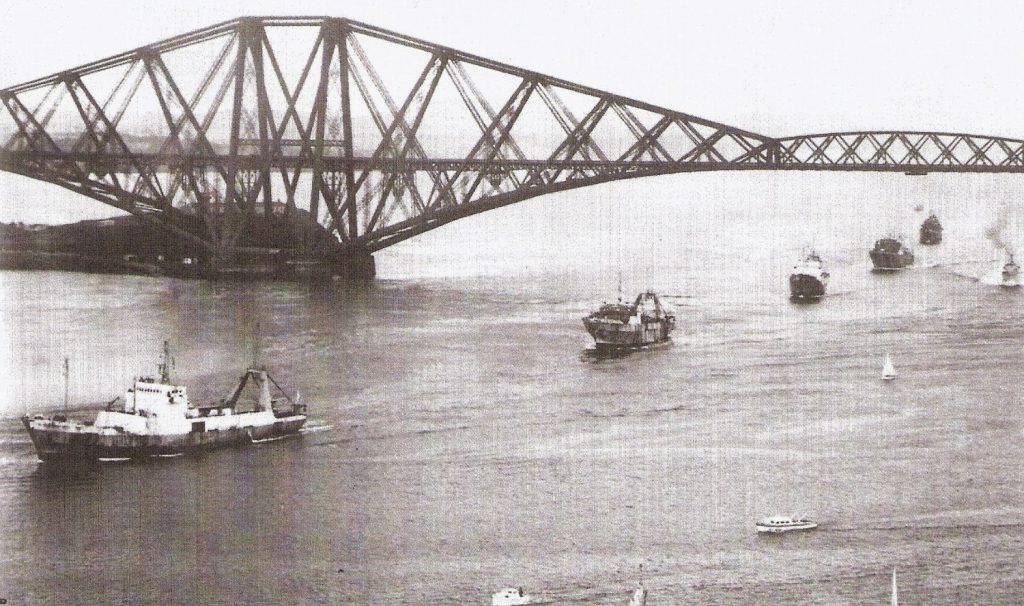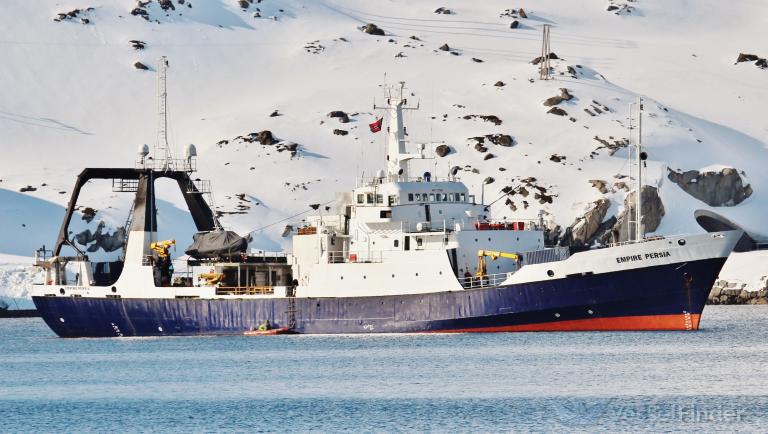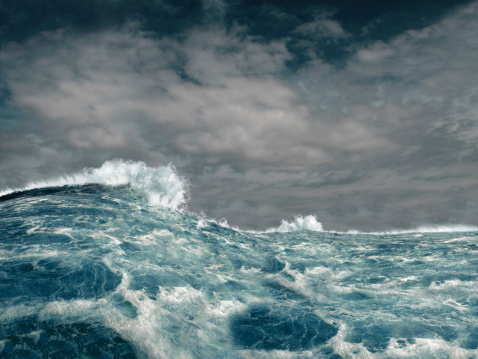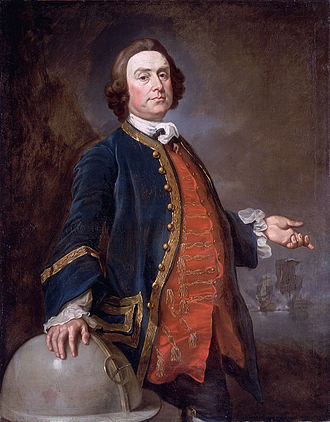April 2nd marks the 40th anniversary of the Argentine invasion of the Falkland Islands. Nine Hull-based civilian vessels were requisitioned to join the Task Force that was assembled by the UK government to retake the islands. Indeed, Hull sent more civilian vessels to the Falklands War than any other port. The nine Hull ships that were requisitioned and sailed south included three tugs, the Irishman, Salvageman and Yorkshireman, as well as five stern trawlers and the North Sea ferry Norland. This is a brief account of one of those vessels, the former trawler Farnella, which, now fifty years old, is remarkably still around.
The Farnella was built by Cleland Shipbuilders in Willington, Quay, Wallsend on the River Tyne in 1972 for J. Marr & Sons and worked out of Hull as a stern trawler. After requisitioning, the five trawlers sailed to the Rosyth naval base where they were stripped of their fishing equipment and refitted as minesweepers. Naval crews replaced the fishermen for the duration though it is said some Hull engineers stayed with the vessels. The Farnella and the three other requisitioned Marr trawlers, Cordella, Junella and Northella, sailed for the South Atlantic on the 25th April and were followed the day after by the last trawler, the Pict. After a brief stop at Ascension Island to top up their bunkers they arrived at South Georgia on the 25th May which had been liberated by British forces a few weeks earlier. Here the trawlers initially carried out various tasks in preparation for the retaking of the Falkland Islands. These jobs including the transporting of stores and soldiers between larger ships – such as the liners QE2 and the Canberra – that they had been taken down on and the often smaller vessels that would be used in the retaking of the Falklands. By that time of year the Austral winter had set in and the weather conditions around South Georgia, never very predictable even in summer, had deteriorated considerably and such operations were often carried out by the trawlers in blizzards and force 10 katabatic winds. On the 5th June the five vessels, including the Farnella, sailed for the edge of the total exclusion zone set up by the Admiralty around the Falkland Islands and, after the troop landings, they anchored in San Carlos water in what became known as Bomb Alley. The Argentine forces had by then not surrendered and so the trawlers were used for covert night time operations which involved dropping off marines, the SAS and other special forces mainly into West Falklands. After the surrender of the Argentine forces on the Falklands on 14th June, the ships carried out minesweeping operations.

After the Falklands War the Farnella returned to civilian duties but was soon to play a remarkable role in the surveying of America’s final frontier. Back in 1980, before the Falklands War but after the creation of the Exclusive Economic Zones (EEZs) which gave countries exclusive rights to everything in the seas and under the seabed up to 200 miles off the coasts, the United States Geological Survey (USGS) embarked on a programme called EEZ-Scan, to systematically map the nation’s EEZ, using the Geological Long- Range Inclined ASDIC (GLORIA) II long range side scan sonar system developed by the Institute of Oceanographic Sciences (IOS) of Great Britain. Over the rest of the decade the huge sea areas off the USA were mapped in this way and the vessel which played a key role in surveying what has been described as America’s final frontier was the Hull trawler Farnella which was, of course still owned by J. Marr. During this work it was operated by Hull trawlermen who worked with American scientists from Wood’s Hole. This survey work took place in the offshore waters of the Atlantic, Caribbean and Pacific and included sea areas in the Bering Sea and in the Gulf of Alaska where one of the ridges discovered there by the ship was named the Farnella Ridge. Incidentally during one of the surveys in more southerly US waters another undersea feature discovered was named the Farnella Canyon. John Davis – former PR man for Marrs – once told me there is a painting of the Farnella in the White House, there because of the important role it played in surveying the US EEZ.
The Farnella was later acquired by Odyssey Marine Exploration and renamed the Odyssey Explorer, and took part in some remarkable operations which included recovering bullion and other items, often of considerable value, from old shipwrecks. In 2011, for example, the former trawler found the wreck of the SS Gairsoppa which had been sunk by enemy action in February 1941 off the west coast of Ireland and was lying nearly three miles below the surface. By the summer of 2013, it was said that 61 tons of silver had been recovered worth around £137 million. Whilst searching for the Gairsopa the ex-Hull vessel also discovered the SS Mantola which had sunk by the U-81 in the Atlantic with a cargo of around 600,000 ounces of silver and was lying in 8000 feet of water. The total value of the cargo recovered from the Mantola was estimated to be around £12 million.
The former trawler regularly came back to Hull for refit at Dunston Ship Repairs and a few years ago, accompanied by Skippers Ken Knox and Peter Craven, along with Alan Hopper, I had the opportunity to have a look around the vessel when it was being refitted: the range of equipment then carried was truly impressive.
Unlike its sister trawlers from the Falklands Campaign, the ship remains in service to this day. Now named Empire Persia, and operated by a Baltic based concern as an offshore support vessel, it is currently moored at Skagen in Denmark. A truly remarkable ship for any age or time.
The five trawlers were the last of a long line of requisitioned trawlers which stretches back to the beginning of the First World War. Whilst down at South Georgia they were at one point moored opposite the place where the former Hull trawler Viola, one of the first vessels requisitioned in the Great War, is now beached. A remarkable coincidence that no one seems to have realised at the time.

Robb Robinson
More Recent News & Events
Celebrating Hull’s maritime links with Melbourne
At Blaydes Maritime Centre we have been working with Hull, Yorkshire’s Maritime City on an exciting partnership with a seafaring city on the other side of the world – Melbourne,…
Researching the history of safety at sea with the help of Lloyd’s Register Foundation
From whalers to warships, Hull is justly proud of its maritime history, spanning 800 years. For the last 250 of these, Lloyd’s Register has been an integral part of the…
Public maritime history seminars
All are welcome to attend our free online public history seminars. The programme is as follows, and will be online. We will update this page with links to the lectures…



